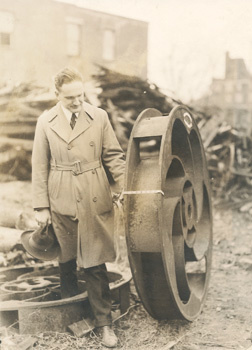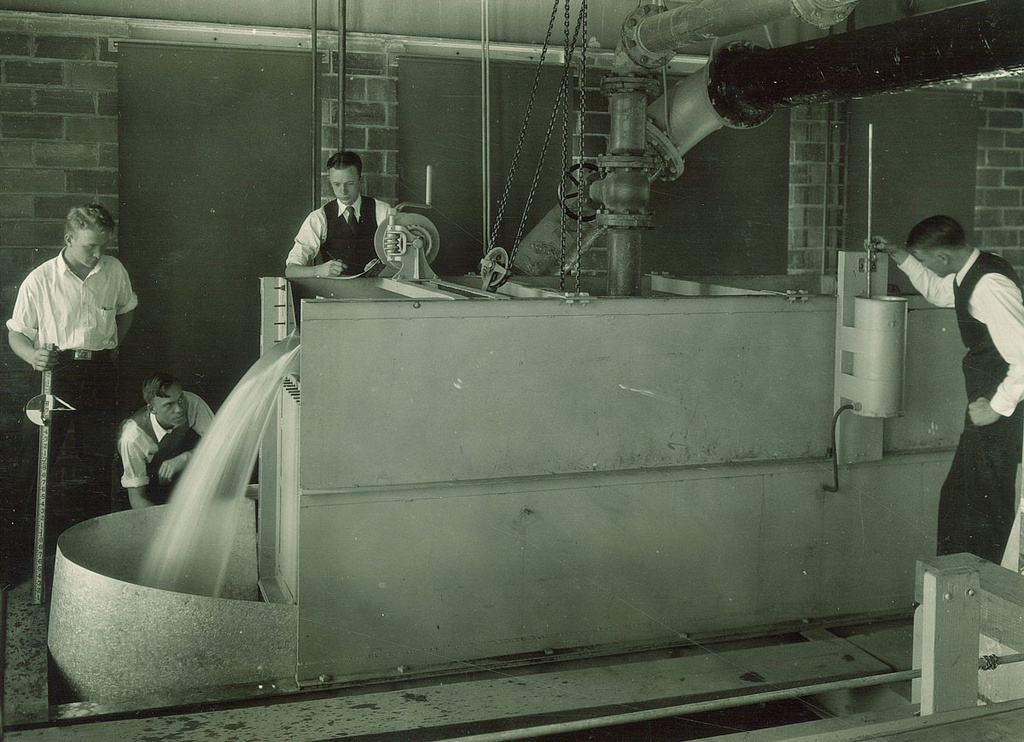Editor’s note: The Old Gold series provides a look at University of Iowa history and tradition through materials housed in University Archives, Department of Special Collections, University of Iowa Libraries.
When Cedar Rapids, Iowa, resident Dennis Hill looked through some items at a recent auction house sale, he didn’t expect to uncover—and save—an important part of University of Iowa research history. But uncover and save he did. He in turn donated his discovery to the UI Archives.
The discovery was a set of journals—dated 1921 to 1933—written by Floyd Nagler (pronounced NAH-gler), a professor of engineering who was the founding director of the Iowa Institute of Hydraulic Research, later to be known as IIHR–Hydroscience and Engineering. The C. Maxwell Stanley Hydraulics Laboratory is a long-familiar landmark on South Riverside Drive, just below Iowa Avenue, and is listed on the National Register of Historic Places.
While its original section was constructed in 1932, the laboratory’s beginnings can be traced to 1920, when the College of Engineering received approval to build a small brick structure to house instruments designed to monitor the flow and activity of the Iowa River. According to IIHR’s website, the laboratory provided the setting for Iowa’s first research and classes in hydraulics.

Floyd Nagler (1892–1933) earned a Bachelor of Science degree from Michigan State University and advanced degrees from the University of Michigan. After six years of employment by engineering firms, he joined the College of Engineering at SUI in 1920, where he established a curriculum and laboratory designed to encompass the emerging field of hydraulic study. Researchers were by this time recognizing the application of fluid motion in a variety of ways, including generation of hydroelectric power and flood control.
Nagler’s journals chronicle the emergence of IIHR, and his entries are at once taciturn and informative. Visitors are noted, and construction progress of the initial structure and later the 1932 groundbreaking for the present-day lab is recorded. On occasion, Professor Nagler even notes what he had for lunch. The journals offer a rare glimpse into the genesis of what has become recognized as a significant center of research.
The journals were recently added to the University Archives’ collection, Records of the Iowa Institute of Hydraulic Research (RG 10.0006.001).
To learn more about the fascinating history of this program, Old Gold recommends Connie Mutel’s book, Flowing Through Time: A History of the Iowa Institute of Hydraulic Research, published by IIHR in 1998. A copy is available in the College of Engineering’s library. Also check out her article, “Floyd Nagler’s Passion for Water Power,” in Iowa Heritage Illustrated 77 (winter 1996).
Old Gold appreciates Dennis Hill’s effort to save and preserve this vital piece of history. His good deed reminds Old Gold that there is a bit of archivist in many among us.
